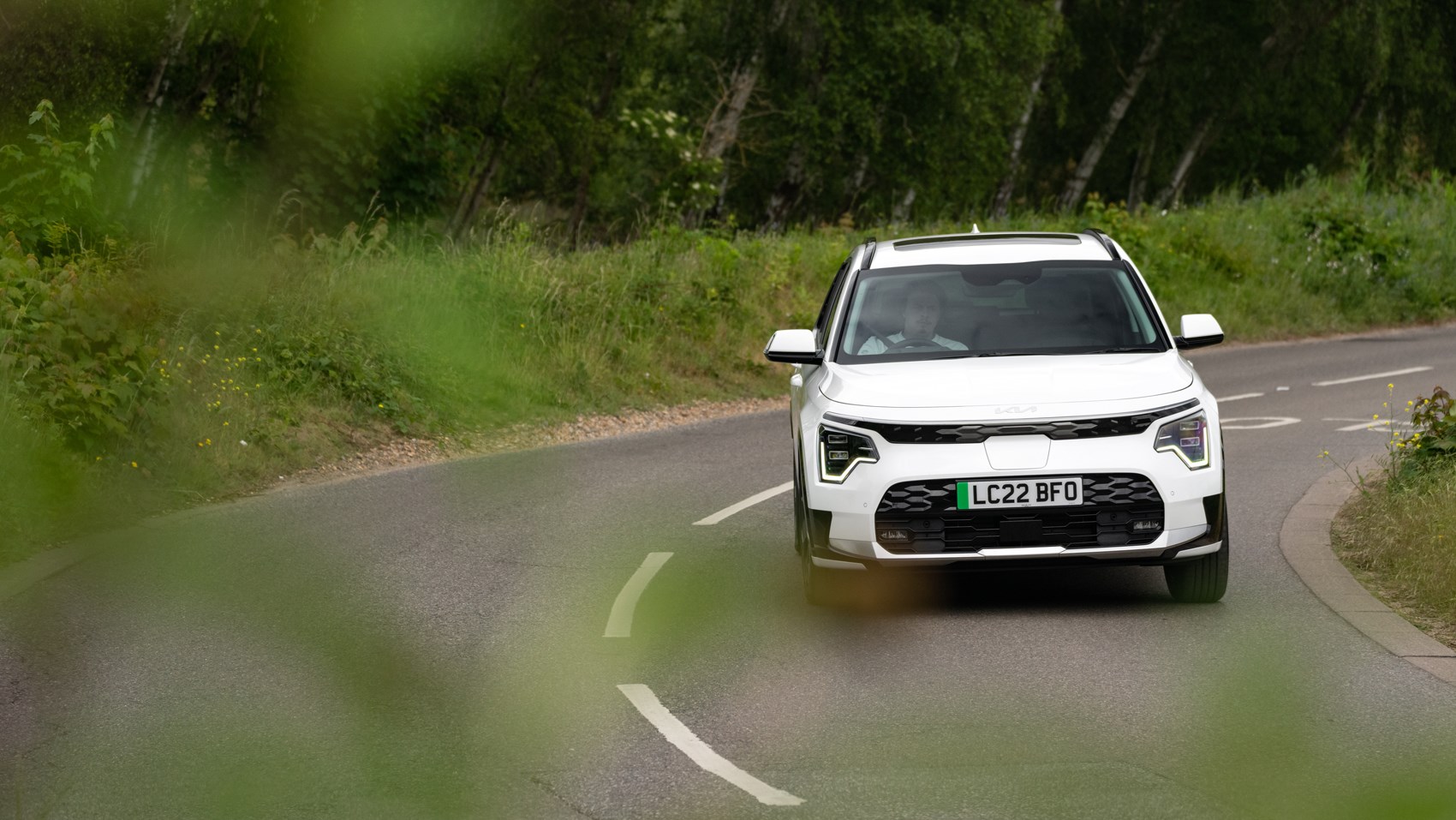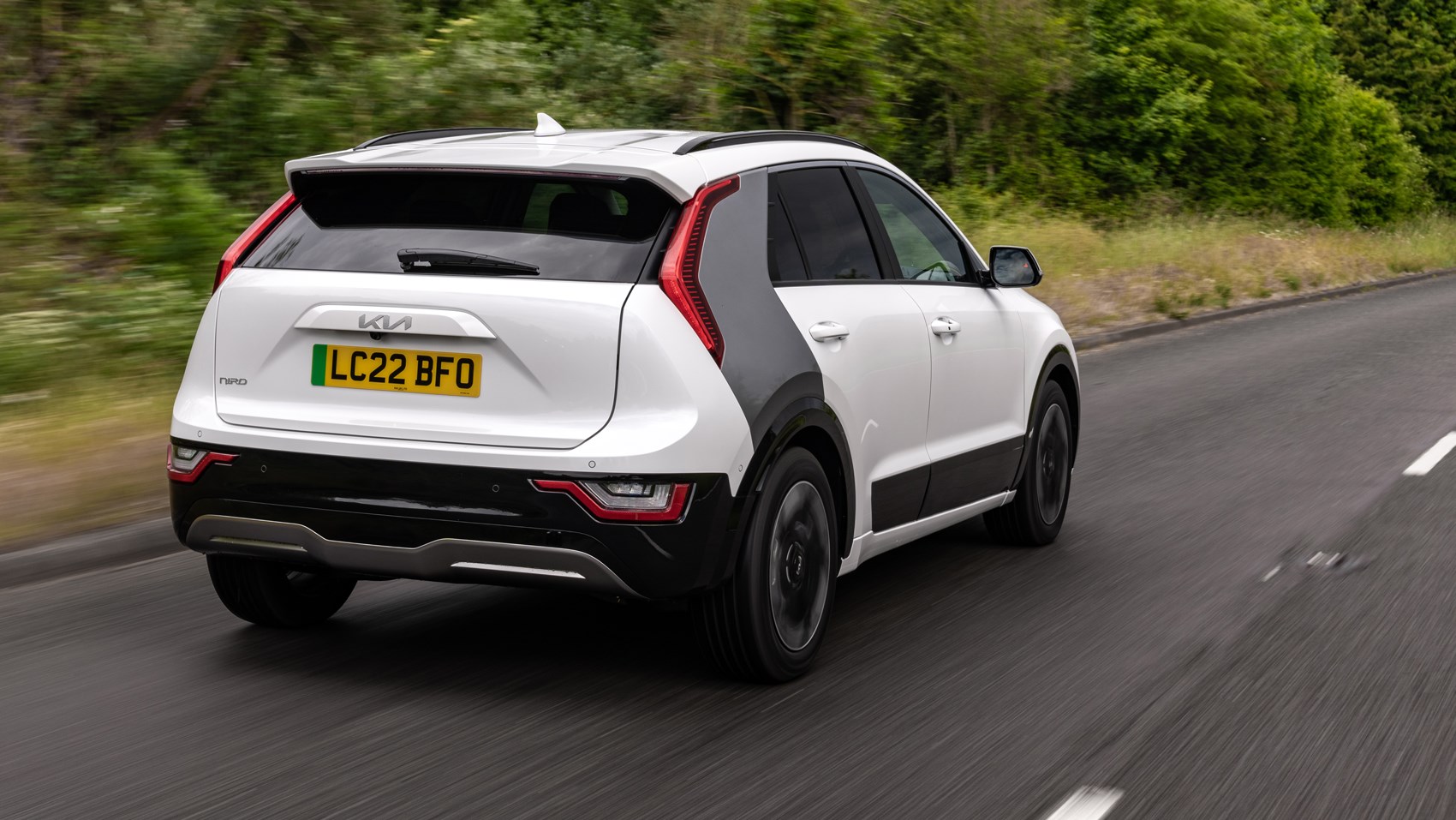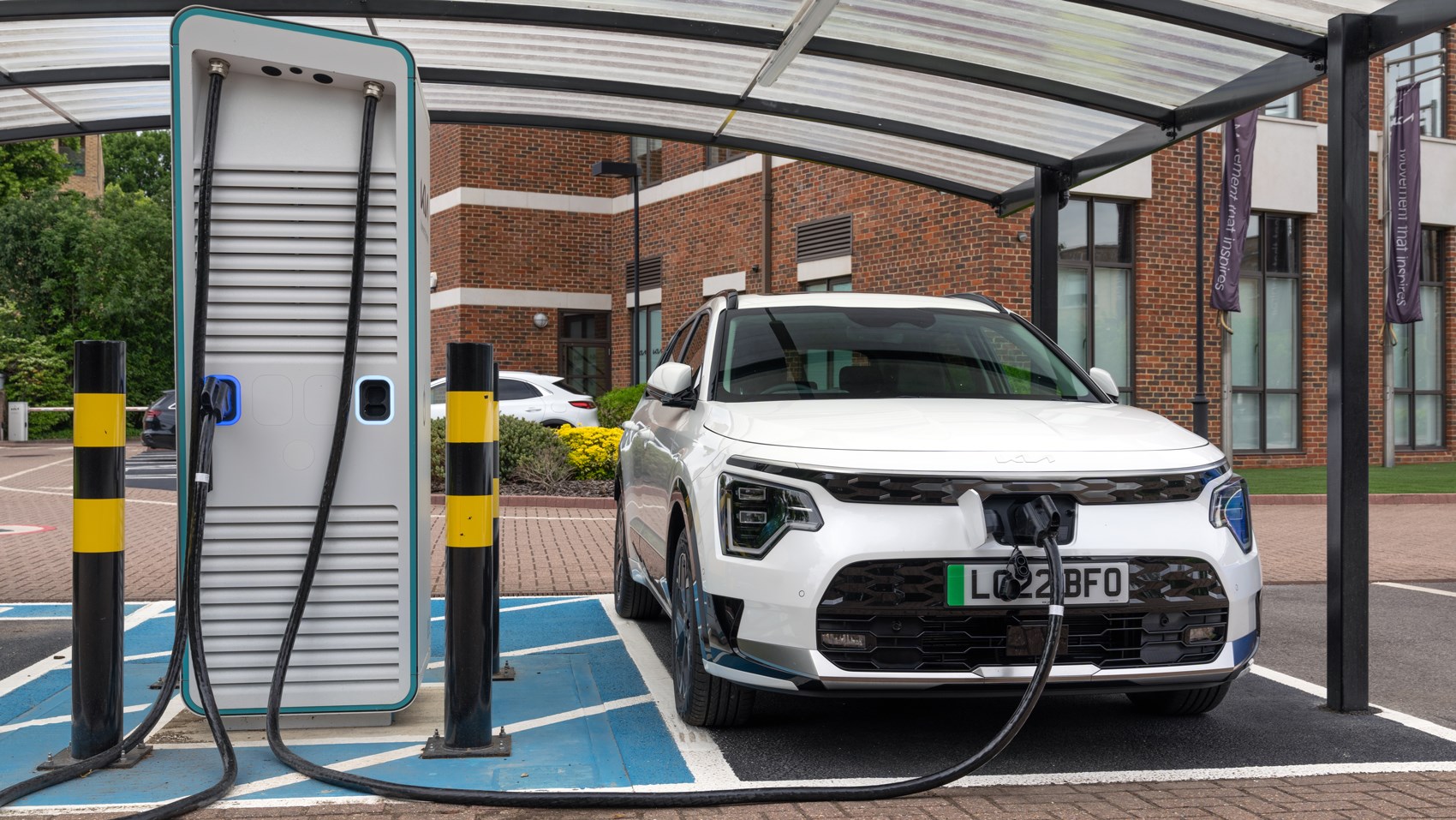► All-new second-generation electric Kia Niro tested
► Smarter inside and out, and slightly bigger
► Two hybrids also available
It may look like the old Niro’s been given some major styling upgrades to make it look a bit more like the company’s highly acclaimed electric-only EV6, but this is in fact the all-new second-generation electric car. This new Niro replaces the car introduced in 2016 and facelifted in 2020.
It’s a little bigger, with a slightly larger battery, and has a much-improved cabin as well as an exterior that’s easier on the eye. The name has changed – E-Niro become Niro EV – but it is still very close to the previous model in its place in the market: a keenly priced family-sized hatch. It’s up there with one of the best value electric cars we’ve seen.
We’ve driven both this Niro EV and its hybrid siblings – you can read the review of those here.
What’s changed?
More than meets the eye. So, as well as the bodywork getting a new nose more in line with other 2022 Kias, and the choice of contrast rear pillars like the EV6’s, the new Niro EV actually sits on a different platform, shared with other Hyundai Group cars not sold in the UK. Whereas the EV6 (and the Hyundai Ioniq 5, and a queue of other electric cars arriving from the Hyundai group) has an electric-only platform, this takes the same approach as the previous Niro – one set of underpinnings that can be used for all three versions. It’s a platform that already underpins cars built for developing markets, so don’t go thinking it’s unproven.

Whereas the hybrids have an engine under the bonnet, in the EV that space is occupied by a permanent magnet synchronous electric motor. As a result, the Niro is front-wheel drive, which is unusual in a modern EV. It gets its power from a new battery, slightly lighter but slightly bigger-capacity than before (64.8 vs 64kWh).
The new chassis has a 20mm longer wheelbase, and the body is a little longer and wider.
The interior has been significantly redesigned, now looking much more modern, with some elegantly swooping diagonal lines up the doors and across the dash, and a significantly more advanced infotainment system. It makes all the right eco-noises, too, with a headlining made from recycled materials and BTX plastics (whatever that means) making up the door cards.
What different versions are there?
The line-up is very simple. There’s just the one battery size: 64.8kWh. One e-motor: 201bhp and 188lb ft. A single-speed transmission, driving the front wheels only. One body: five doors, five seats. And three spec levels, called 2, 3 and 4.
The entry-level Niro EV, the 2, has an 8.0-inch central touchscreen and 10.25-inch digital instruments, and 17-inch aerodynamically optimised alloy wheels. Spec level 3 adds V2D functionality (‘vehicle to device’ – the ability to charge electronic devices from the Niro via a three-pin plug – as seen on the EV6). The top spec includes a head-up display, a 10.25-inch touchscreen, heated outer rear seats, ventilated front seats, a powered tailgate, electric sunroof, upgraded audio and more safety-enhancing electronics.

The same spec thinking – with very few differences – extends across both hybrids and the electric Niro, with a £2750 price increase as you go up a grade.
The hybrids start from £27,745 at the time of launch, while the EV begins at £34,995.
What’s it like to drive?
One of the more interesting differences between E-Niro and Niro EV is that the new car has less torque (188lb ft, down from 291), a slightly lower top speed (103 rather than 108mph) and a slower 0-62mph acceleration time: 7.8, up from 7.5sec. This makes a refreshing change from the arms-race mentality of so many other manufacturers, who like to ensure that everything new is more powerful than everything old.

And it’s quite deliberate. There’s no need for the Niro to be Kia’s quick offering – the EV6 can scratch that itch, and it won’t be alone, as by 2027 Kia’s line-up will include 14 battery electric vehicles. Instead, the Niro is playing to its strengths, as a sensible, practical, compact all-rounder. Less torque means less wear on the front tyres, and should help extend range between battery charges.
On the road, it all makes perfect sense. It’s still perfectly lively enough away from the traffic lights, and is happy to cruise well in excess of the national speed limit. As with the previous Niro, the steering is nothing special, and any attempt at hard cornering is met with body roll. It is, however, significantly more planted than the hybrid variants, both of which feel like they’re teetering on the edge of collapse at every corner.
There are three drive modes (plus Snow mode – full disclosure: we didn’t try it), chosen via a button on the steering wheel. Eco makes the accelerator pedal a little stodgy. Sport makes it slightly livelier, and adds some weightiness to the steering, but the wheel is still remote and unengaging. Better to stick to Normal, and enjoy its sensible balance.

Similarly, you can adjust the level of brake energy recuperation, using paddles behind the steering wheel, but after considerable experimentation we discovered that the middle default setting is in fact the best. If you like one-pedal driving, hold down on the left paddle and you’ll engage ‘i-Pedal’, which brings you down to a full stop.
The physical brakes, rarely needed, work just fine: a suitable amount of power, easily modulated.
The previous Niro’s ride quality was its main weakness. It’s improved – dramatically – but there’s still none of the easy fluidity of the VW ID.3, a key rival. It feels unsettled on pockmarked tarmac and jittery on faster roads.
How practical as family transport?
It’s roomy enough for four large adults, but only a little ‘un in the middle at the back. It’s quiet, rather than silent, and well equipped with safety kit, charger slots, good-quality infotainment and comfortable – rather than luxurious – seats.
The boot is not huge: 475 litres with the rear seats upright (slighly bigger than before), and 1392 litres with them folded. Up front there’s a nominal 20 litres of luggage space in a black box under the bonnet, but in reality that’s occupied by the charging cables. The rear seat splits 60:40, and there’s a fold-down central armrest.
It’s very much at home in town, with a tight turning circle, and easy parking thanks to a good view out in every direction.
Is it an EV that’s easy to live with?
The range according to WLTP test methods – but yet to be confirmed at the time of our test drive – is 285 miles between charges (up from 282 miles). On our test drives, that seemed realistic. Charging times have gone down slightly – best-case scenario would be from 10 to 80 per cent full in 45 minutes. We got around a respectable 4.0 miles per kWh on our test drive.

And it’s a Kia, so there’s a seven-year warranty.
Kia Niro EV: verdict
The last electric Niro was a huge success: Britain’s second best-selling EV in 2021 (a pattern being repeated in 2022), behind the Tesla Model 3. This one is very much the same sort of thing, but better in many ways: smarter, more modern, more efficient (subject to official confirmation) and slightly roomier.
To drive, it’s nothing special. The reduction in performance is no bad thing, though; it shows Kia understands what the Niro is all about, and who it’s for.
While the styling is a big improvement, there’s nothing very special about some of the materials used, which don’t feel particularly great, and you wouldn’t mistake the sound of the doors closing for a Mercedes.
More important is that, as with most Kias, it makes life very easy for the driver, with a common-sense mix of physical buttons and modern electronics. And don’t forget that reputation for reliability and seven-year warranty – huge draws for Kia owners.
But would you go for one over an EV6? In pricing terms, Kia’s obviously keeping the cars from treading on each others toes, and a top-spec Niro EV ‘4’ just undercuts a base-spec EV6 Air. If it were our money, we’d go for the EV6, though. An increase in range and a vast improvement in driving dynamics is worth losing a bit of extra equipment for.